Challenger tales from Euro RSCG's Suman Srivastava
Adgully: Please share with us the defining moments in your career.
Suman Srivastava: I look at these events as milestones for the business rather than as just personal achievements. In many ways, working on Surf Ultra in the early days †working with the whole team at Hindustan Unilever †was a very important event in my life. What I did later, and which got me into the planning mode, was very interesting and process-driven. We remember when Ariel was launched, it was a pressurizing moment for us. That is when I appreciated the notion that advertising was not just about making ads, but it was about process, about being creative and thinking out of the box. Later still, joining Euro RSCG was an important decision in my life in itself, and it has been the only job change that I have effected in my 23 years of career. At Euro RSCG, I decided to move into planning in 1999, after being the head of the Mumbai office †that was again a fairly significant decision for me.
AG: What would you list as the key milestones in your association with Euro RSCG?
SS: One is the entry, second is moving into planning and the third has to be becoming the chief executive officer. I think planning was a really good thing for me because it gave me a lot of exposure to the rest of the world. Planning allowed me to work on global pitches, meet and work with global CEOs, and so on. I mean I never really worked outside India but I know the core network really very well. Beyond shaping my own career, it shaped my thinking. I was also involved with the development of strategic tools that we now use across our group. Till the time I was at Lintas, I used to think that strategic tools had come down with Moses or something, like it was always there. Then here, I was in a network which did not have a strategic tool. Then around 2002, a team was put together to come up with the tools. We already had some of course, being used here and there, but it was not like one proper process. Not everybody used those tools and not everybody used them in the same way. So we sat down and we created standard tools for the network by going through other tools and evolved a very, very modern process.
AG: Can you elaborate on the strategic tools your company uses?
SS: See our idea is that all consumers aren't created equal. There are certain people who affect trends more than the others, and we call them "prosumers". So we have developed an algorithm which can spot a "prosumer" in a research. We give more weightage to what the "prosumer" says, almost five times more weightage. So this is one of the key pillars which our strategic tool is based on. We also use something called the "brand momentum", which is a bit like the "swing factor" cited by Prannoy Roy during election analyses. So we are saying that the absolute-recall or the absolute-awareness scores are not as important as the momentum. We measure brand momentum and within that, of course, we measure brand momentum among prosumers and non-prosumers. Then we have a tool called "decipher" which we developed a little later, which is based on semiotics â€it analyses categories. We put all of this together and come out with what we call a "creative business idea". The prosumer technique is something that we have developed and used for more than a decade now. Even in India, we have done three large-scale syndicated studies. The "Bunty Syndrome", "Remixed Generation" and the original prosumer baseline †these have been some of our major studies.
AG: What are the salient strengths of your team?
SS: We are a good challenger brand agency. If you look at our competitors, some of them are 100 years old and as a global network, Euro RSCG is only 19 years old. Among the top, we are the fifth agency in the world; among the top ten, we are the youngest by far. We are a young agency †in India, we will complete 15 years next year. We are a challenger brand, and therefore we have a younger team and we like to think with the challenger brand sort of mindset. Moreover, even in terms of clients, we work best with other challenger brands like SET Max-Deewana Bana De campaign; Red FM-Bajaate Raho campaign; and the Dainik Bhaskar- Zidd Karo campaign. We are quite strategic overall as a team. Besides, since we are relatively new, we don't have as many case studies to show, we don't have experience in necessarily every category. I think our reality is better than our perception. I think in some ways, we need to be there in some of the larger pitches, I think we have the talent and the capability to do that. I think when lot of clients are thinking of which agencies to call, we are not quite there yet. But our strengths lie in factors like technology, media, finance etc. We have also been developing our expertise in some of these areas and on the other hand, we don't have expertise in some of the other domains.
AG: You are very active on the digital medium, with blogs and tweets. Do you think your agency has been able to capitalize on the e-revolution?
SS: My revenue in digital is much higher than the market average. So, this year probable 8% of our revenue will come from digital. And I daresay that we would be among the largest digital agencies in the country. We are not in the media space, we are probably up there with the largest agencies purely in designing, creative, social media, and now search. We also made an acquisition which we announced a month or two ago in the search space. First of all, because we have IBM, we do a lot of digital work with Max New York Life and we do some work for Airtel. So we have a good number of digital clients. Then we also do a lot of back-end production work for our network. We have around 26 people here doing digital work. Our strategy is not to have a separate digital agency, because it is like saying "why don't I have a separate TV agency?" or "why don't I have a separate hoarding agency?" I have one team and that one team will give you integrated solutions. I will have a set of people who do production because that is specialized.
AG: A lot of agencies believe in having a divided working force for OOH, TVC, Digital etc. your take...
SS: It is a model that most agencies have used around the world and I think that model has proved to be a failure, because clients want integration. The problem is when you have one person representing each division and each of these guys is a profit-centre head. Then we are fighting among ourselves. Gradually, the problem becomes internal to the agency, so what we have settled as global policy is the "power of one'. We have one profit-and-loss account for every geography. Besides the other issue with digital is that though in other divisions, clients will look for answers to their marketing needs, in the digital side they will come and say "I want a Facebook app". The clients don't even want to study how a digital tool fits into their brand strategy. We are trying to tell our teams to understand the problem. And there are only three marketing problems in the world: I want my consumer to buy my product, I want my consumer to buy more of my product, and I want my consumers to come back to me. So I can have a set of people who go and deliver activation because that is specialized. But the thinking on it must be done by one team and the same team.
AG: Do you think print is soon going to be replaced by other technology innovations like iPad?
SS: No media has been killed by any other media. We have only added a medium; we have never deleted a medium. We will find new ways, we will find new niches. Earlier we have general magazines, but then GEC happened, so they gave way to niche magazines. The same thing is happening on TV †GECs' share is shrinking and that of specialist channels is growing. I can't consume everything, so if something caters to my specific interest, I am going to watch it or read it. Thus with print too, it will find its niche. Besides the iPad will just act as an additional revenue source.
AG: Do you think the advertising industry does not have the time to wait for a talented person to deliver?
SS: I don't think there is dearth of creative people in India who can solve problems; there might be a dearth of creative people entering the advertising industry. So if you look at the latter, the problem has got to do with our industry because we cannot afford them. We have debased our business. We have to reinvent our business, we have to reinvent what we give free to our clients. We have been in the business of giving clients everything they value, and charging them for other junk that they can get cheaper elsewhere. So if we reinvent our business to capture the real value that we currently create, we can afford to go back and hire the kind of people we need.
AG: What are some of the trends you foresee in the advertising space?
SS: The biggest thing that is going to happen is the challenge that the client has got of integrating the units. There was a time when clients dealt with one agency that did everything; then we split media and creatives. Then we said: creative, media, and digital [are separate]. So now, suddenly there is a Brand Manager sitting there who now has to deal with seven or eight agencies, and that is only on the communication side. He or she has to still deal with all the other people they used to deal with like R&D, logistics, production, sales, packaging etc. Plus, there are these seven to eight news divisions in an advertising agency. Besides marketing teams are shrinking and the client cannot really have an integration plan, so they will look up to an agency to provide them with an integrated plan. Moreover, we need to understand that every brand is important †we cannot say that we cannot create a soap brand. We can create a soap brand, maybe it will be a niche soap brand but we can do it. In our industry, we will have both ends of the spectrum working: on the one hand, the larger agencies will have more and more integration and on the other we will have more boutiques as well â€boutiques providing super-specialized services. I don't see the media agencies surviving for too long with their current streak. They do parts which are very cerebral (planning and the creative aspects); and they also deal with very process-commodity kind of functions: collect vouchers, sell release orders etc. This part which is about money management and cash management, I suspect, is going to get specialized again. Somebody else needs to do it and do it on a large scale. The creative part might move back and merge with creative agencies or maybe they will buy out creative agencies and become a full-fledged creative unit.
AG: Any advice for new talent?
SS: Come to the industry first! We are not getting necessarily the brightest people and it is very strange. I occasionally go to teach at IIM, and at ISB in Hyderabad, and there are students who come and ask me what do they have to do to enter advertising and I tell them that they need to bear a huge pay cut. A lot of people are genuinely interested and they might not be from IIM, but we need to get these people in. So to the young talent, I would like to say that advertising industry is a great deal of fun and maybe at the moment it doesn't pay that well but then it will. | By Prabha Hegde [prabha(at)adgully.com]




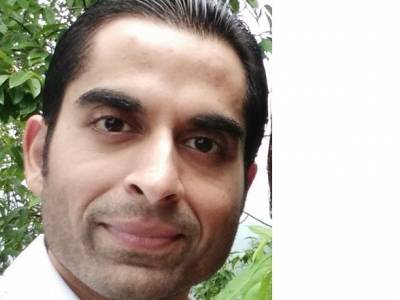
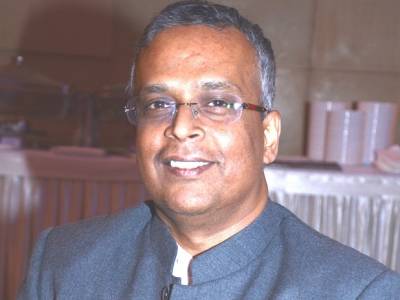
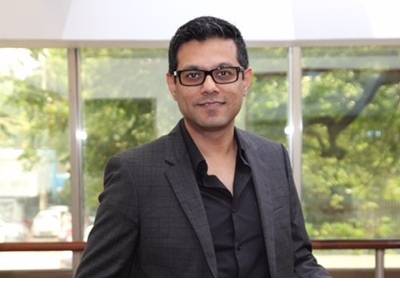
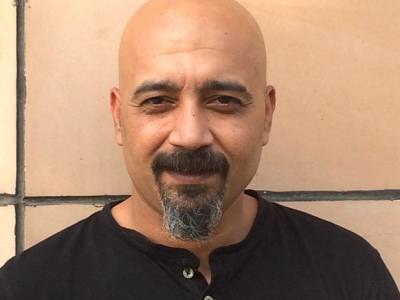

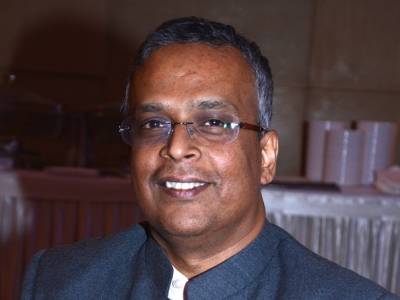



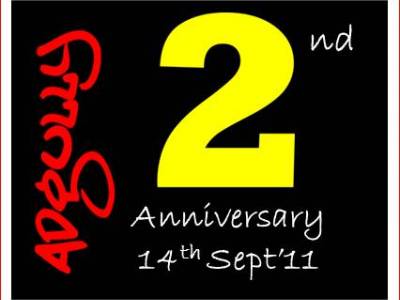

Share
Facebook
YouTube
Tweet
Twitter
LinkedIn